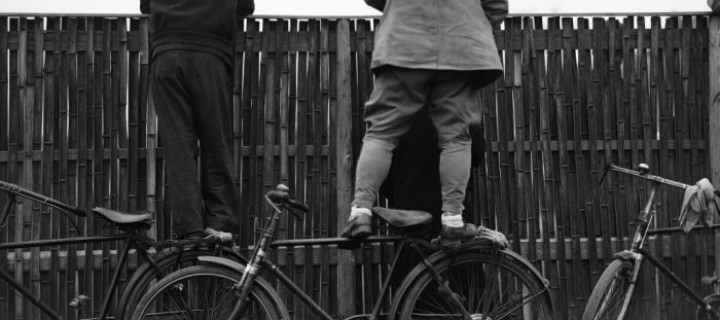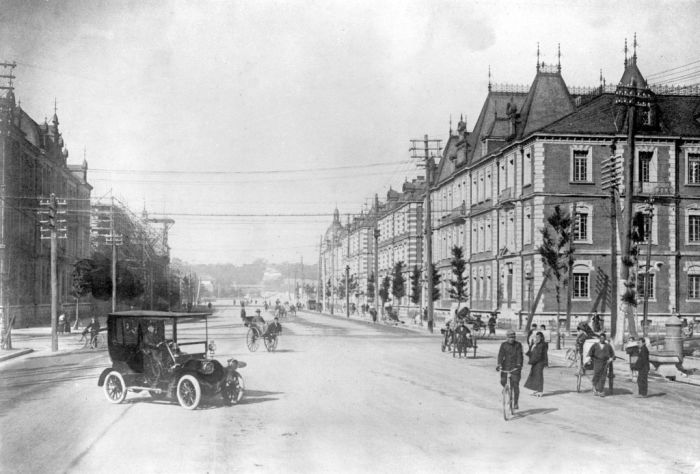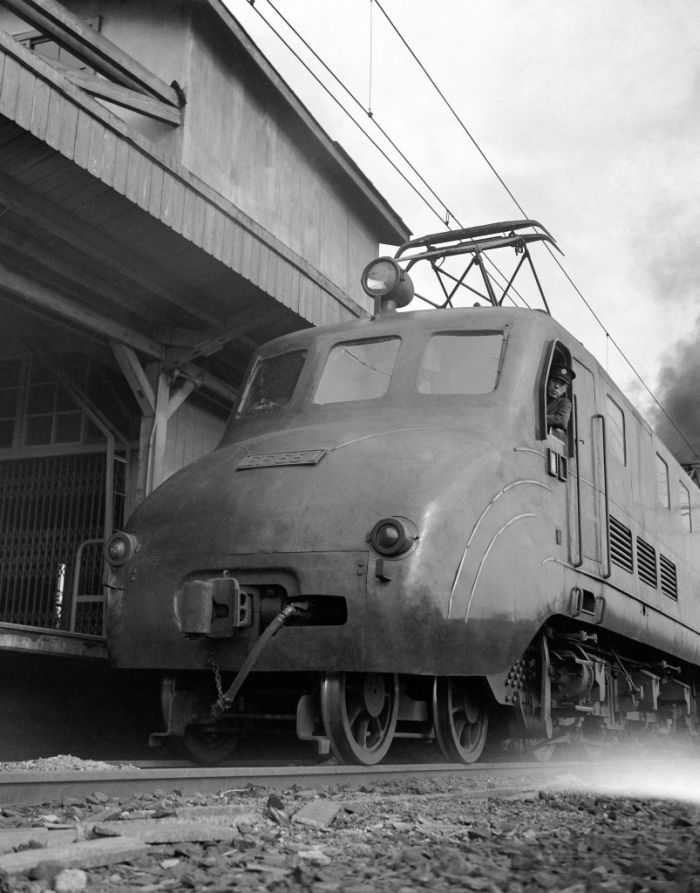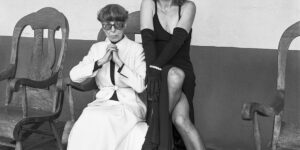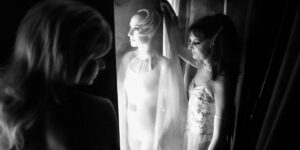Collection of historic images documenting city life in Tokyo, Japan between 1917 and 1950.
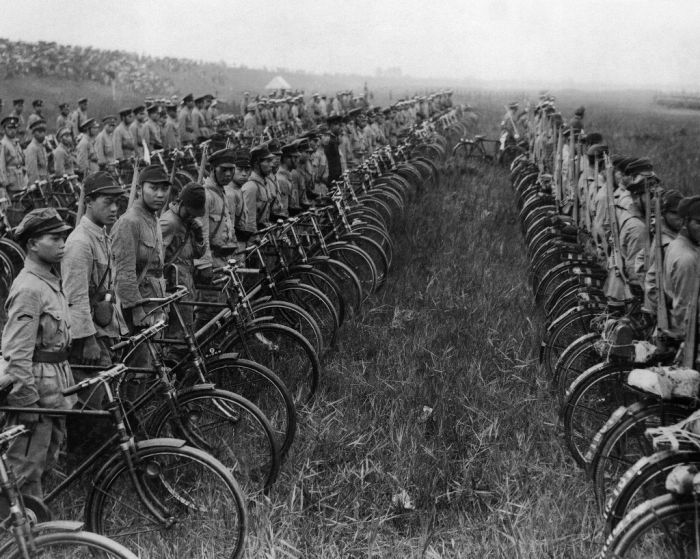
Fifty thousand students in and round Tokyo are undergoing rigorous training for war. Some of their numbers as they participate in maneuvers, equipped with bicycles to facilitate quick arrival at the front in Tokyo on Nov. 5, 1936. (AP Photo)

The Akasaka district, one of Tokyo’s residential areas, lies in ruins after the 8.3 magnitude earthquake on Sept. 1, 1923. (AP Photo)
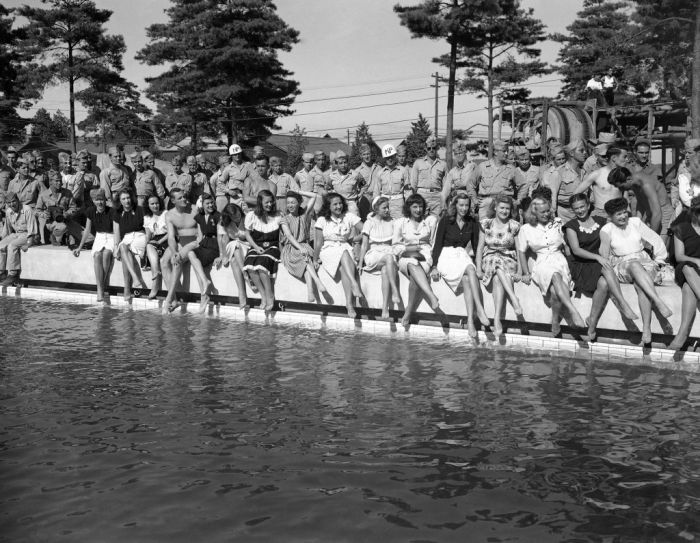
Show girls from the Mikado theater in Tokyo, their legs crossed and bare feet dangling near the water, pose on the side of a swimming pool at a new American air base at Yokota, Japan on August 17, 1946. How one male, presumably a soldier, got into the otherwise all-girl lineup at poolÂs edge was not explained. Uniformed soldiers stand behind the girls. (AP Photo/Charles Gorry)
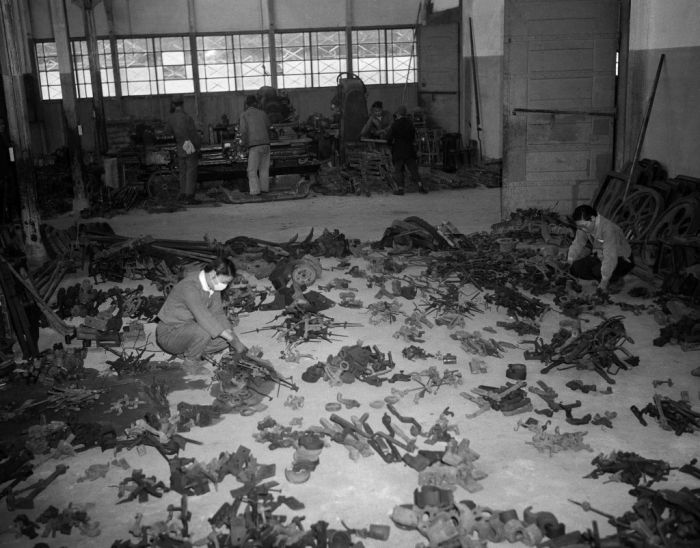
Machine tools and parts for machinery are being made with metal melted down from scrap salvaged from the wreckage of former war plants. Girl employees check salvaged material, set out on the floor of a warehouse in Tokyo on July 26, 1946, to determine what can be used and what must be melted down to make new parts. (AP Photo)
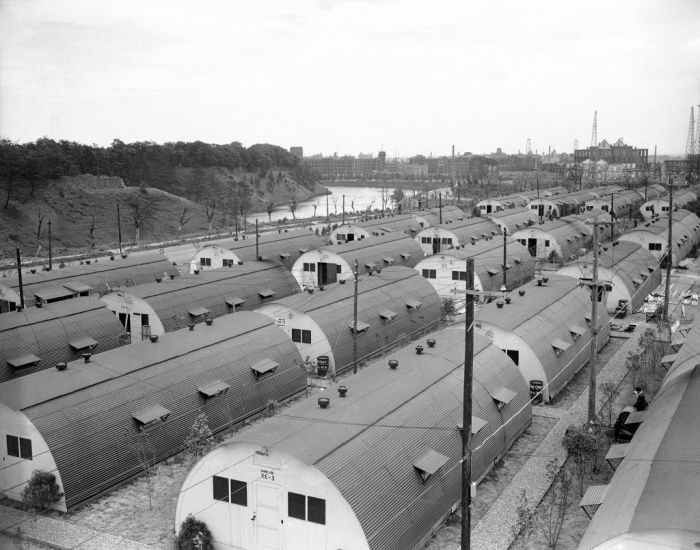
General view of Palace Heights looking towards downtown Tokyo on June 10, 1946. In background is the Imperial Palace and the moat surrounding the grounds of the emperor. The first families are expected to arrive next month at which time the project is expected to be finished. (AP Photo/Charles Gorry)
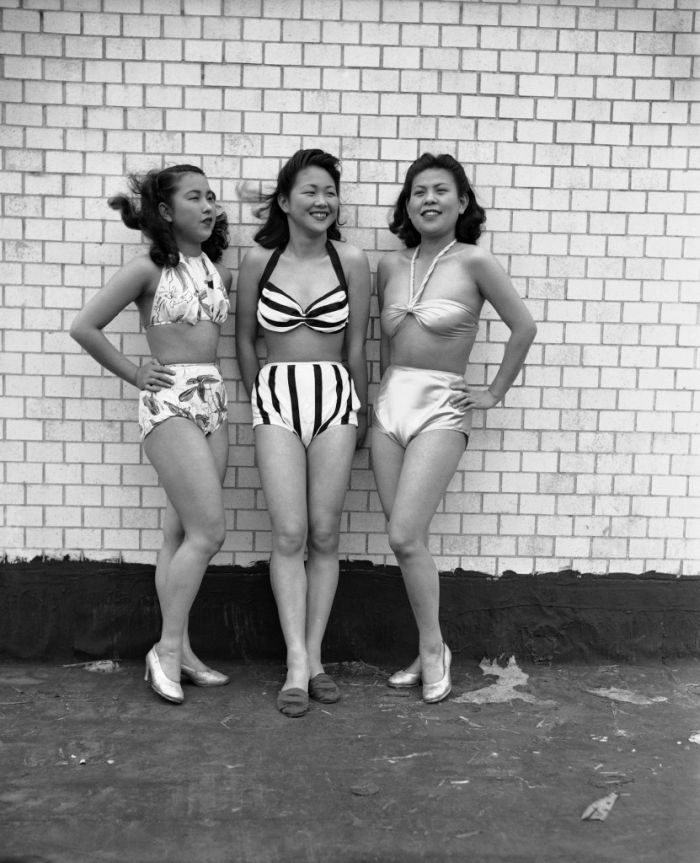
Three dancing girls at the Imperial Theater in Tokyo on May 29, 1946, model new 1946 style Japanese bathing suits, known as ÂDemocratic suits. From left To right: Mitsuso Kitajima, Akiko Yoyogi and Yoshiko Kubomura. (AP Photo/Charles Gorry)
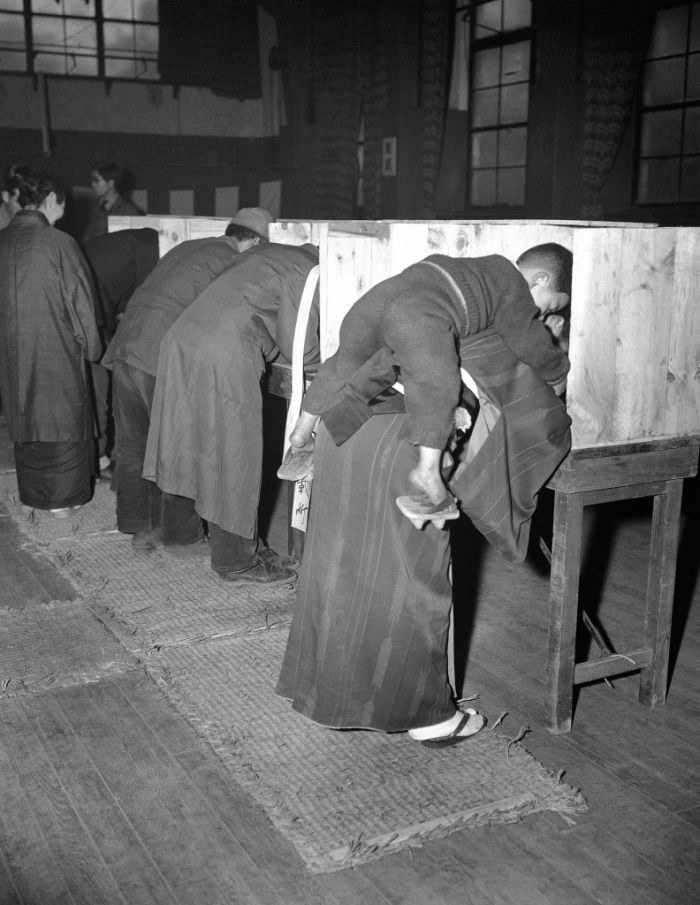
A Japanese woman carries her son on her back as she marks her ballot in Tokyo on April 10, 1946, in JapanÂs first free election in generations. Japanese women exercised the right to vote for the first time to help elect a new lower house in the diet. (AP Photo/CPG)
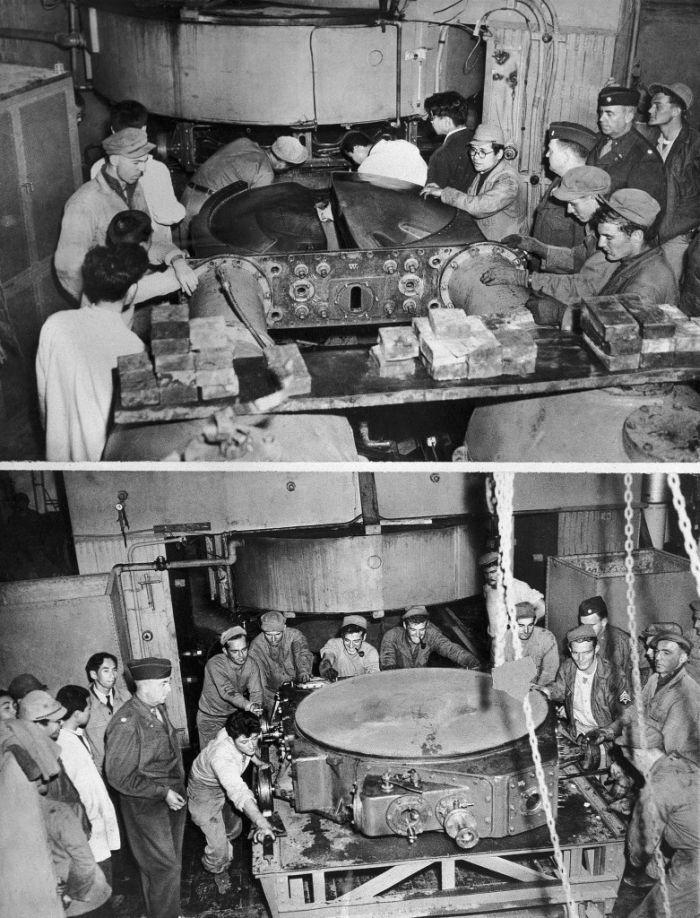
In this combo photo, members of an American Engineer Aviation Battalion remove parts from a Japanese cyclotron in the Nishina Laboratory at Tokyo on Dec. 4, 1945. Part of the ÂAtom Gun is removed. A vacuum chamber is extracted. The operation is part of the Allied program of destroying all Japanese atomic energy research equipment. (AP Photo/Julian C. Wilson)
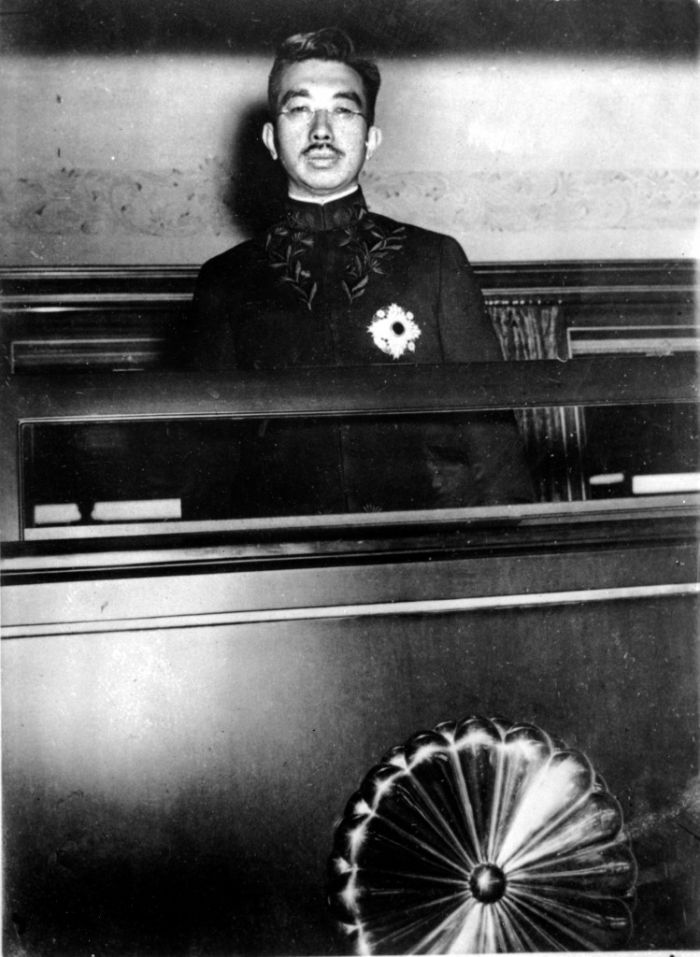
Japanese Emperor Hirohito peers from a window of his special railway car in Tokyo, Japan on Nov. 11, 1945. Hirohito is traveling to visit his family shrine. (AP Photo)
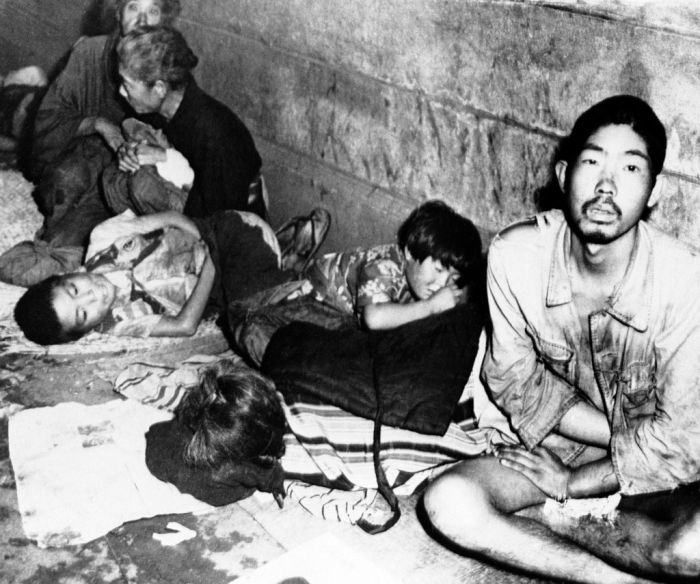
Hundreds of Japanese jam the Ueno railway station in Northeast Tokyo, on Oct. 26, 1945, these windy autumn nights seeking shelter. Homeless, the old and the young huddle together on thin matting and old newspapers, and try to sleep. Many are starving. Police estimate there are two of three deaths nightly from starvation. (AP Photo)
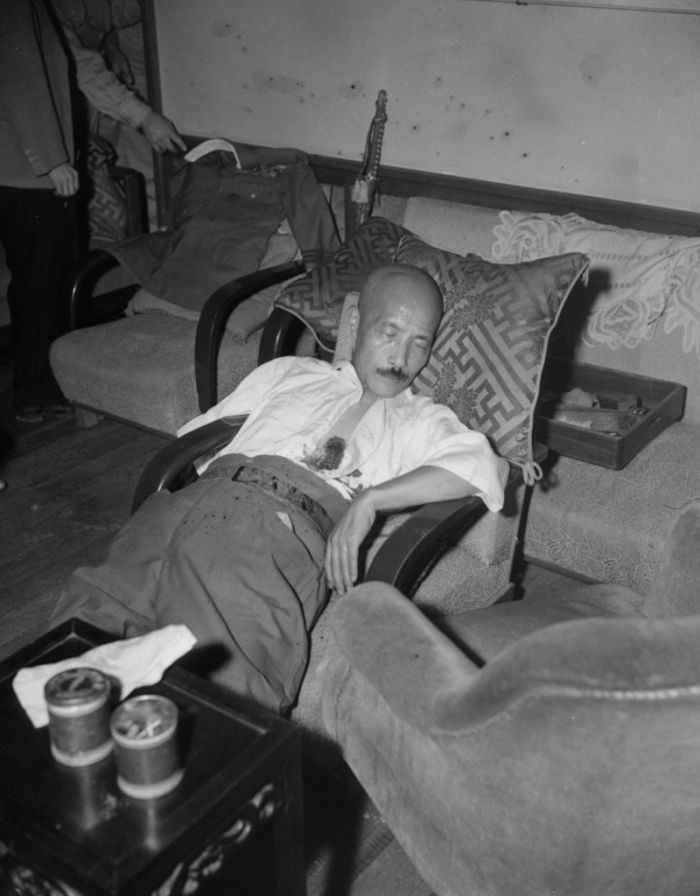
With a gaping bullet wound just below the heart, Gen. Hideki Tojo, former Japanese premier who failed to lead Japan to victory, lies semi-conscious in a chair after he shot himself, September 11, 1945 in Tokyo, Japan. (AP Photo/Charles Gorry)
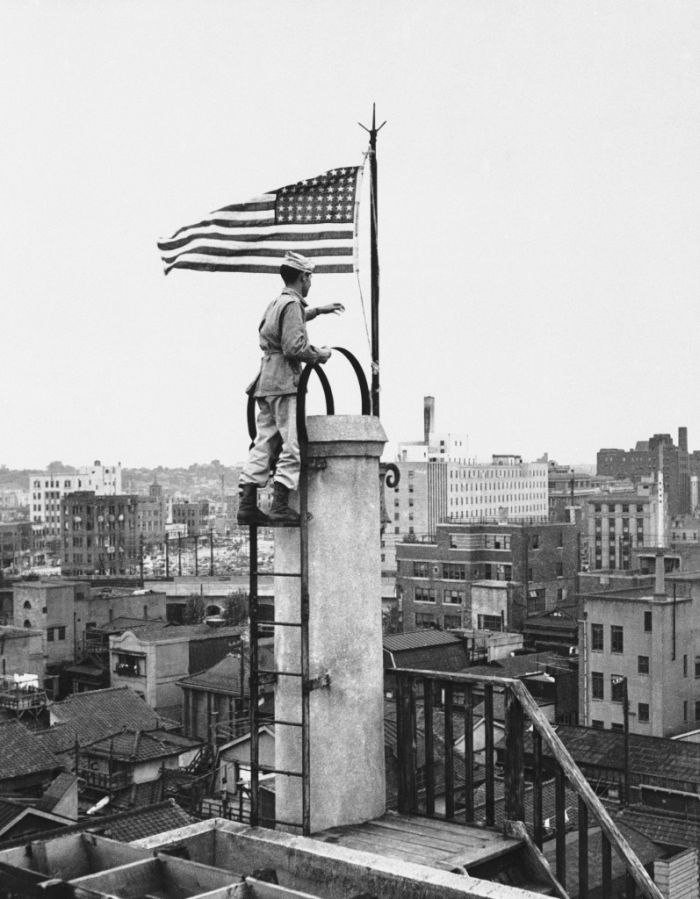
The American flag, first to fly over Tokyo since the Japanese surrender, is raised over the Nippon News building in downtown Tokyo on Sept. 5, 1945 by Lt. Bud Stapleton of Syracuse, N.Y. Photo radioed from Manila. (AP Photo)
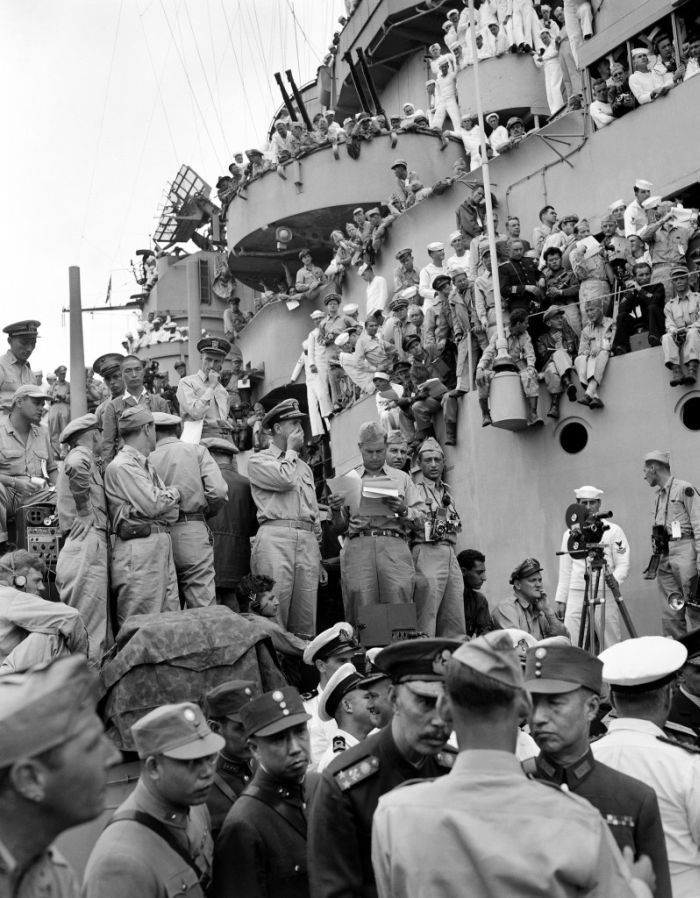
Spectators and correspondents from all over the world pick vantage positions on the deck of the USS Missouri, in Tokyo Bay, on September 2, 1945, to watch the formal Japanese surrender ceremony marking the end of World War II. (AP Photo, Frank Filan)
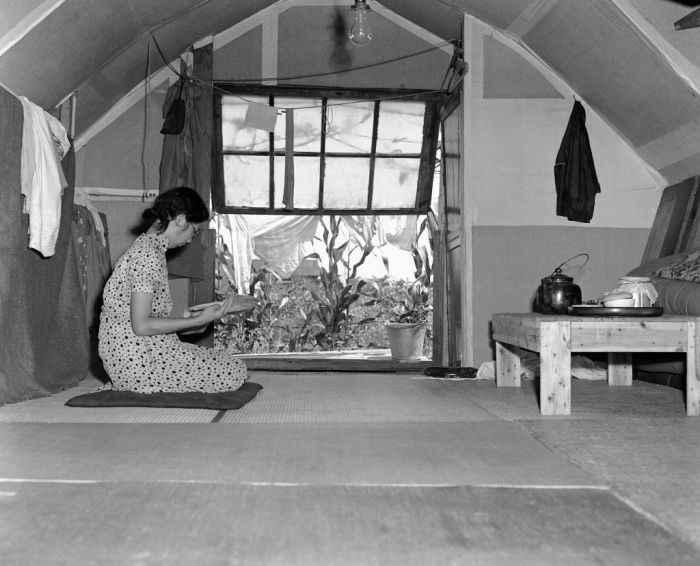
Interior of one of the homes built out of salvaged material from homes in Tokyo on July 24, 1944, that were bombed or burned. Furniture is scare but the harvest through the window looks good and a little trading with the neighbors will keep the larder stocked till the rice crop comes in. (AP Photo/Charles Gorry)
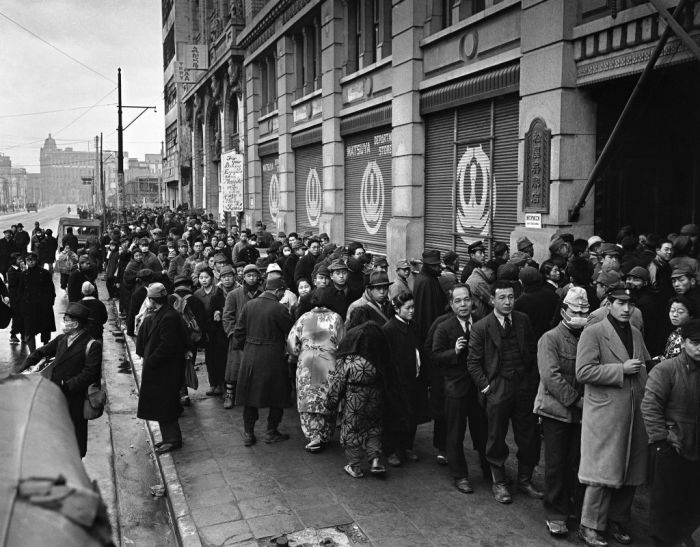
Part of the crowd that waited in line to purchase the new Japanese cigarette Peace, ten to a packet and one pack to a customer in front of the Matsuya department store on the Ginza, TokyoÂs main shopping center on Jan. 25, 1944. (AP Photo/Charles Gorry)
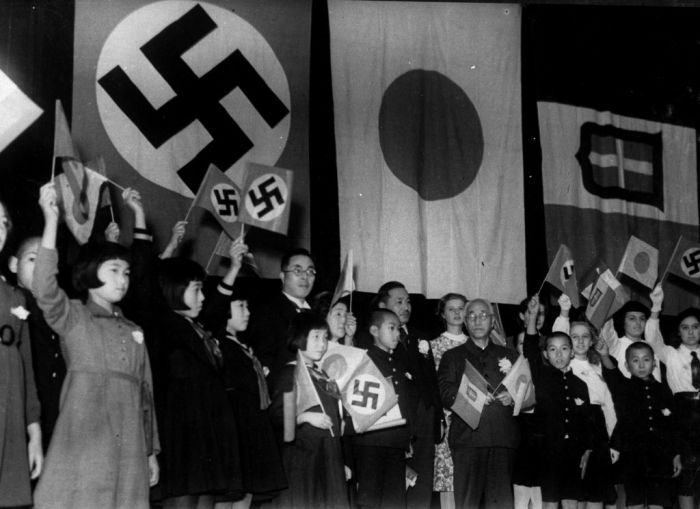
Children of Japan, Germany, and Italy meet in Tokyo to celebrate the signing of the Tripartite Alliance between the three nations, December 17, 1940. Japanese education minister Kunihiko Hashida, center, holding crossed flags, and Mayor Tomejiro Okubo of Tokyo were among the sponsors. (AP Photo)
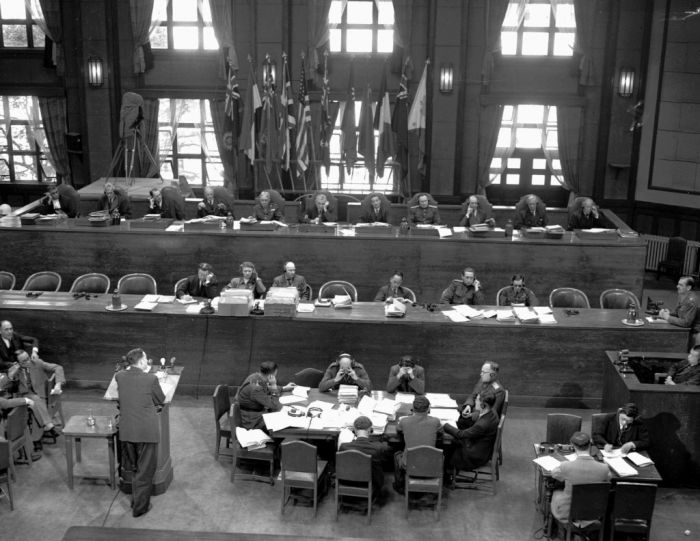
This is a general view of the International Military Tribunal for the Far East meeting in Tokyo in April, 1947. On May 3, 1946, the Allies began the trial of 28 Japanese civilian and military leaders for war crimes. Seven were hanged; others served prison terms. (AP Photo)
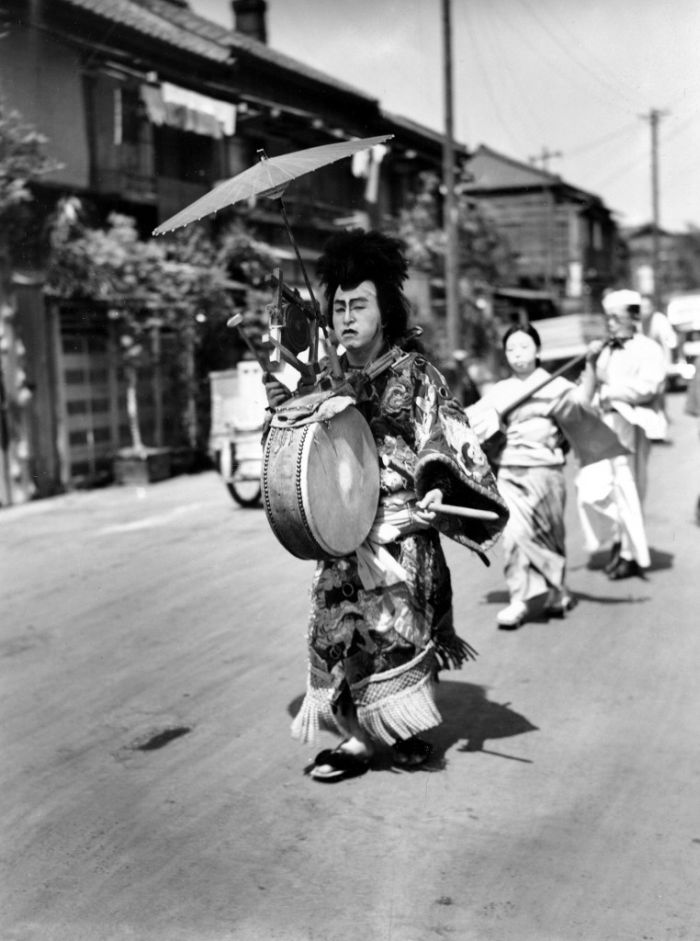
A Japanese man in costume beats the drum as he leads a musical parade of men and women who are walking advertisements featuring placards for restaurants through the streets of Tokyo, Japan, Feb. 14, 1947. (AP Photo)
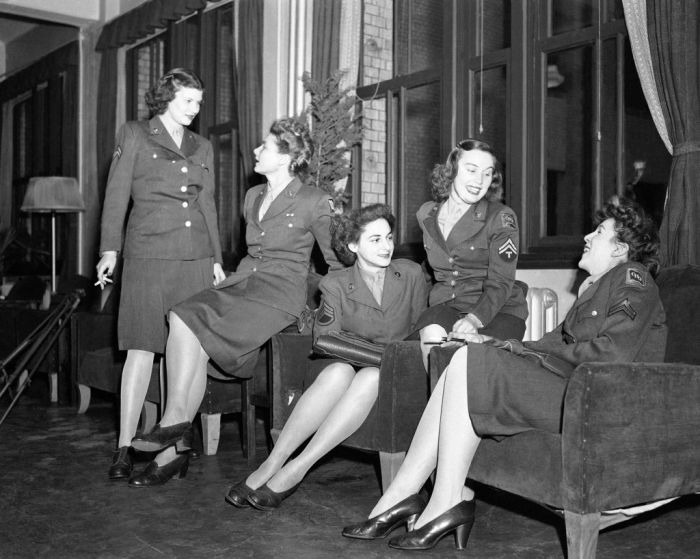
Group of WACs pose in Tokyo lounge on March 17, 1947. From left to right: Cpl. Joan Marley, Cleveland, Ohio; Cpl. Virginia Mahringer, St. Louis, Missouri; Staff Sgt. Artemus L. Bekiares, Chicago, Ill.; Cpl. Elizabeth Gordon, Norwich, Conn.; and Cpl. Virginia Schweitzer, of St. Albans, N.Y. (AP Photo)
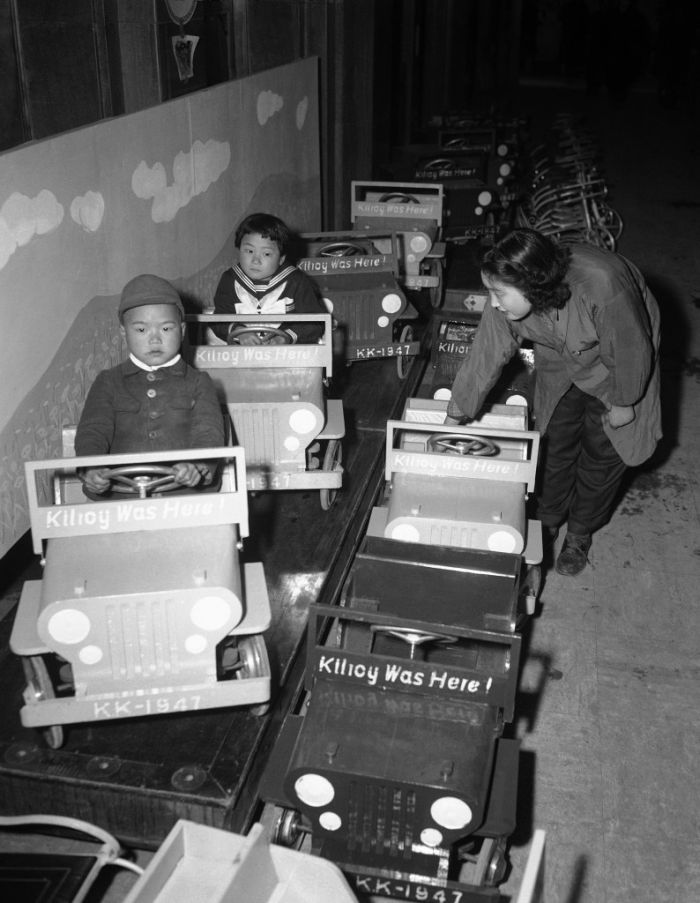
Japanese children, visiting a Tokyo department store on March 21, 1947, try out toy jeeps bearing the slogan, ÂKilroy was here, placed on them by the Japanese manufacturer. (AP Photo/Charles Gorry)
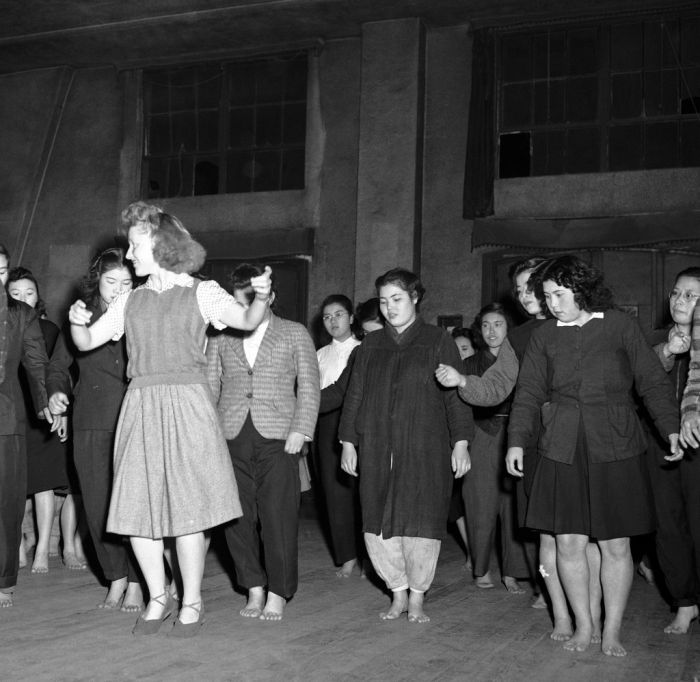
Barbara McBride teaches Russian-style Korobotchka dance to her Japanese students in Tokyo at the YWCA, once a week as seen here, Dec. 29, 1946. (AP Photo)
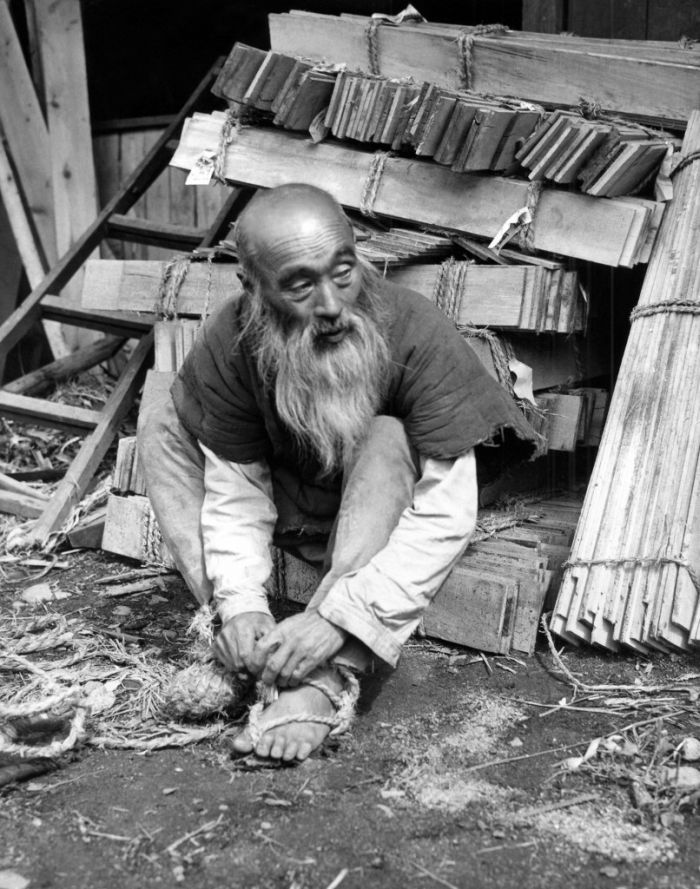
Hikosaku Sakamoto, 63-year-old Japanese farmer, who doubles as a long distance runner and weight-lifter once each year to advertise the shrine festival in his hometown, Shirakawa, Japan, removes his straw sandals on Sept. 24, 1946, after running 125 miles from Shirakawa to Tokyo. (AP Photo/Charles Gorry)
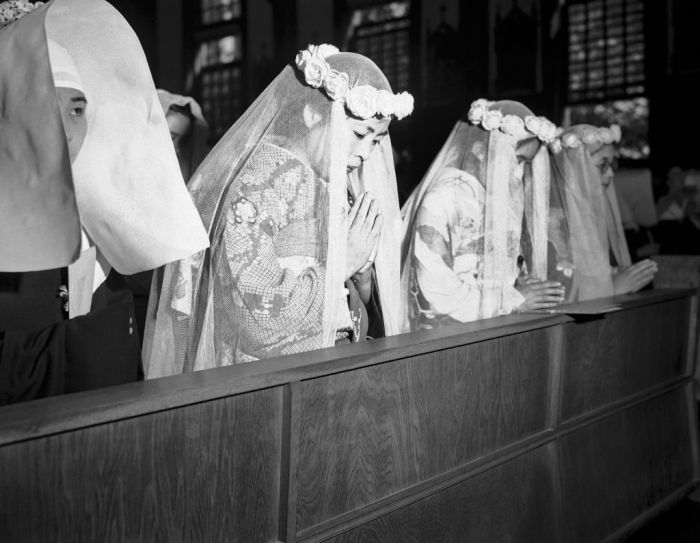
The girls offer up prayers a few minutes before they took their first vow in their first step towards sisterhood, they are at the altar in Tokyo, Japan on Oct. 8, 1946. (AP Photo/C. P. Gorry)

Russian soldier with tommy gun stands guard outside the Russian Embassy as the members of the “Repatriation Association of Japan” await an answer to present their case to this head of the mission in person, in Tokyo, Japan on Dec. 22, 1949. (AP Photo/Charles Gorry)
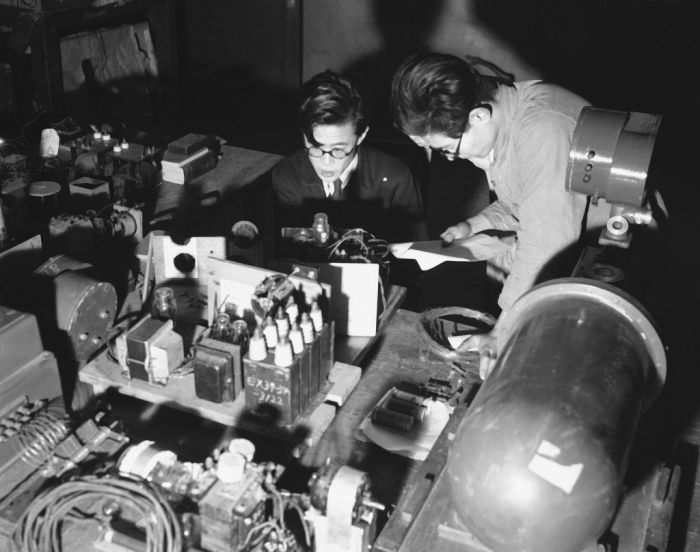
A group of Japanese scientist under the leadership of Dr. Yoshio Nishina is working on the continuous measurement of cosmic ray intensity, measuring the mass of the meson, one of the elementary particles of atomic nucleus. The research is being done by Scientific Research Institute Limited headed by Dr. Nishina, who among other thins manufacturers penicillin to help defray the costs of the experiments as the government does not appreciate any funds for research. They carry on their work in a lab that would do justice to a Rube with dangling wires, broken down boxes used to house equipment and room heaters to try and control temperature and also keep the drafty, damp working quarters warm. Assistant checks over the Geiger-Muller counter at laboratory in Tokyo, Japan on Dec. 1, 1949. (AP Photo)
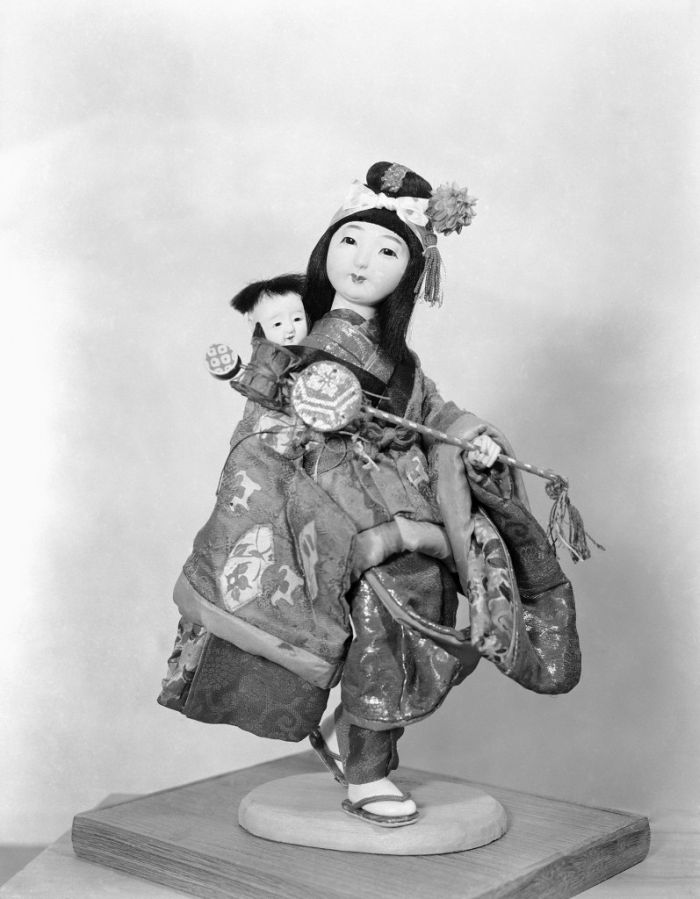
One of 20 dolls donated by Japanese manufactures for the United Nations International ChildrenÂs Emergency Fund in Japan on Oct. 27, 1949. This doll is quite expensive, and is made for display not play. The dolls were turned over to an UNICEF representative in Tokyo, for shipment to New York City. (AP Photo/Charles Gorry)
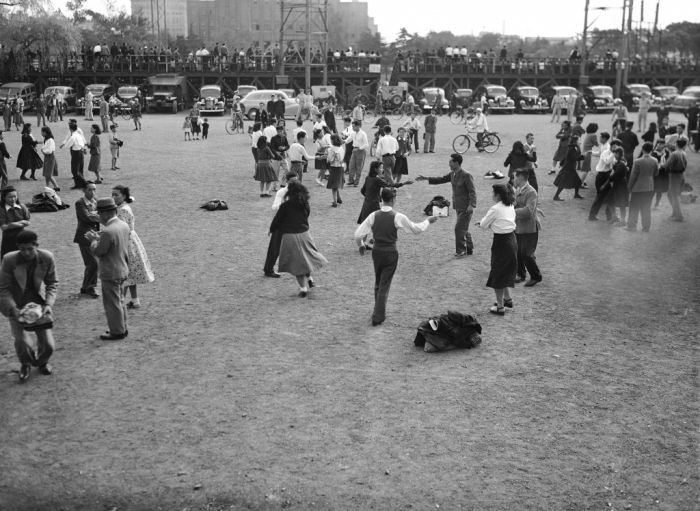
The Virginia reel, a favorite American folk dance, is something new for the Japanese, dancing in Hibiya Park, Tokyo, Oct. 18, 1949. The music is ÂParlez Vous, a World War I tune. The dancers are employees and friends of a Tokyo business organization, which got the people out for square dancing on a balmy day as part of a new move to better employer-employee relations. (AP Photo/Charles Gorry)
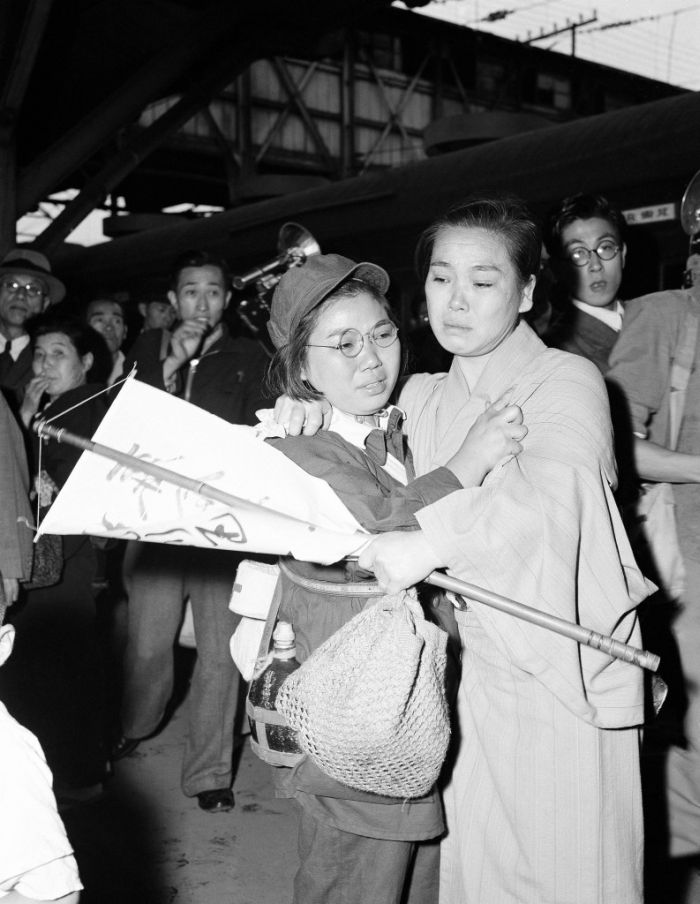
A mother and daughter meet after ten years of separation at Tokyo station on Oct. 7, 1949. They were separated on the continent during the war against China. The youngster, whose father died in the interim, wears a Communist type uniform given to her in Manchuria. (AP Photo)
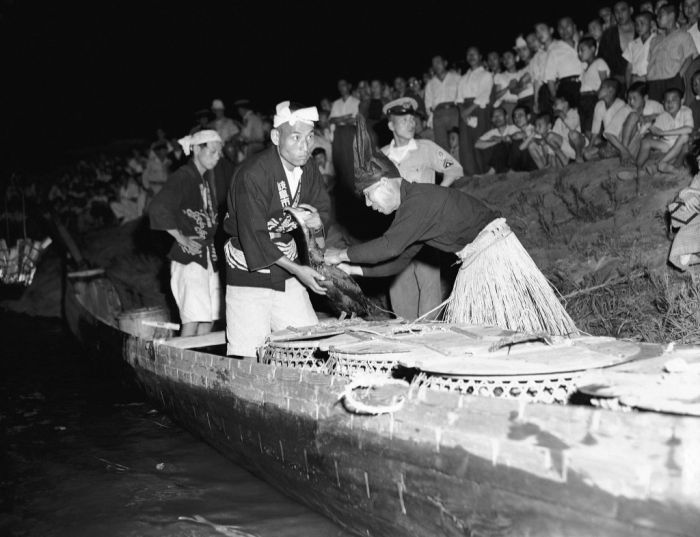
In traditional costume, bird fishermen demonstrate to a Tokyo crowd how to make the birds give up their catch of fish, July 23, 1949. Gentle stroking of the birds necks usually does the trick. The birds cannot swallow the fish because of a metal ring around their necks. (AP Photo/Charles Gorry)
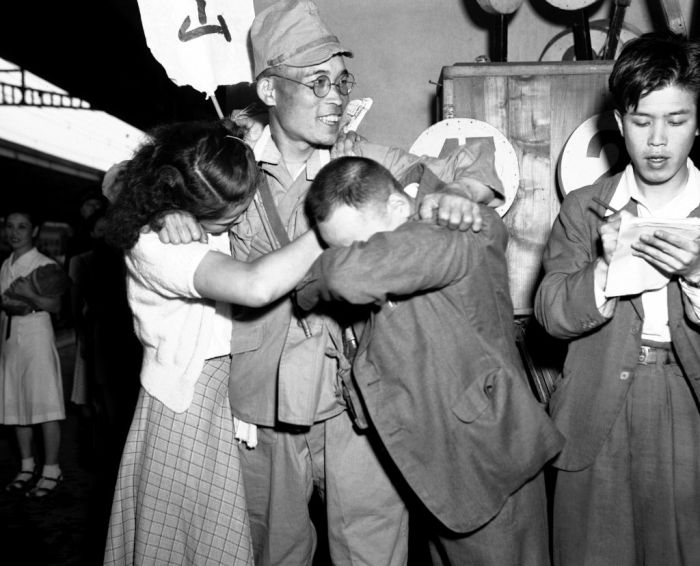
Family members greet each other as a small group of the first batch of repatriates from Russian held territory who arrived back in Japan aboard the Takasago Maru arrived at Shinagawa station a few miles from Tokyo on July 6, 1949. Their wives and children, many separated for over five years, were on hand to greet their husbands who they had thought lost in the war. (AP Photo/Charles Gorry)
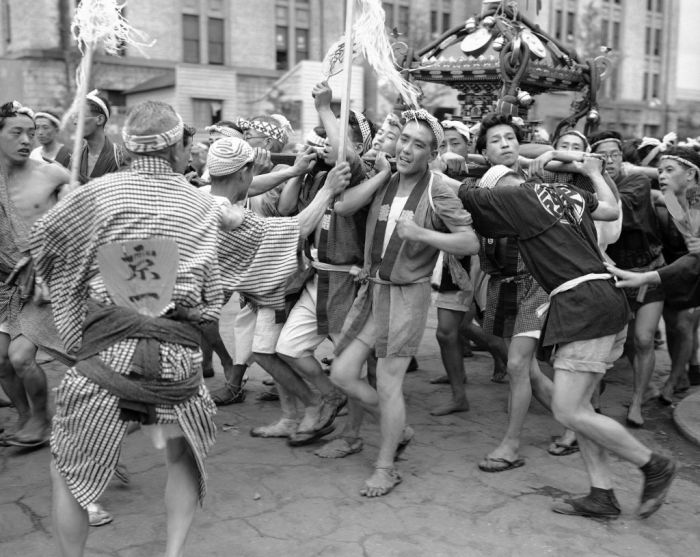
These excited young men are taking part in a festival in the Konda district of the city of Tokyo on April 7, 1949, sponsored by a small restaurant owner in the locality (who also had all the concessions cornered). They are carrying the neighborhoodÂs shrine on their shoulders, all the time jumping up and down and chanting. (AP Photo/Charles P. Gorry)
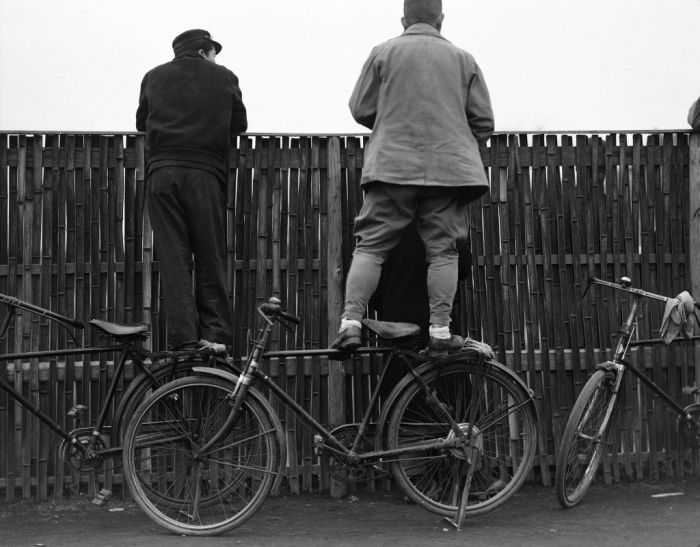
These fans are watching a pre-game practice session of ball players in Tokyo, Japan on March 25, 1949. The teams were warming up for the first playoff game, which opened JapanÂs baseball season. (AP Photo/Charles P. Gorry)
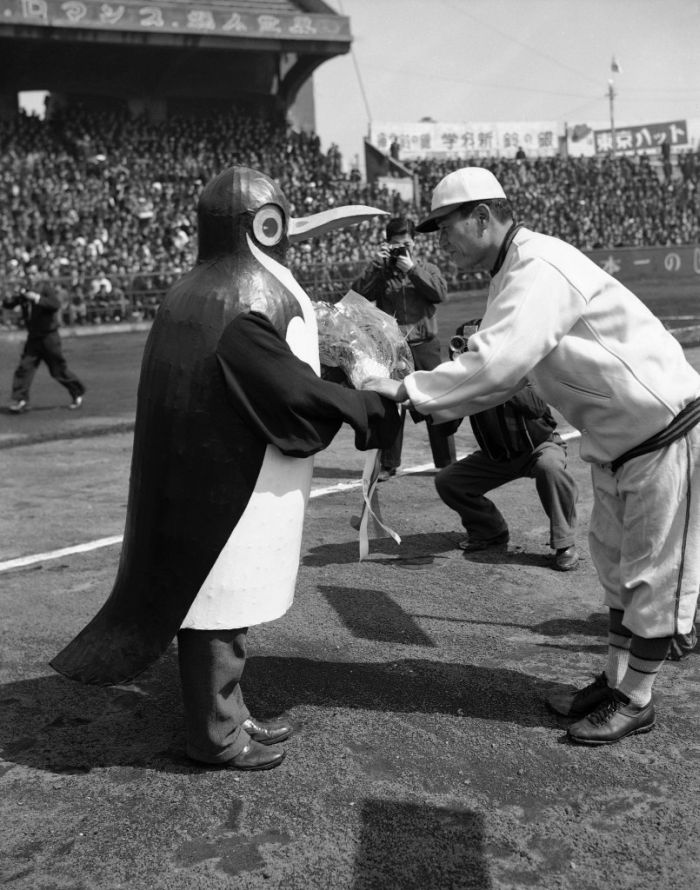
As the baseball season opened in Japan, a penguin-costumed attendant presents flowers to the manager of one of the eight teams in the league in Tokyo on March 25, 1949. Every manager gets a bouquet on opening day. (AP Photo/Charles Gorry)
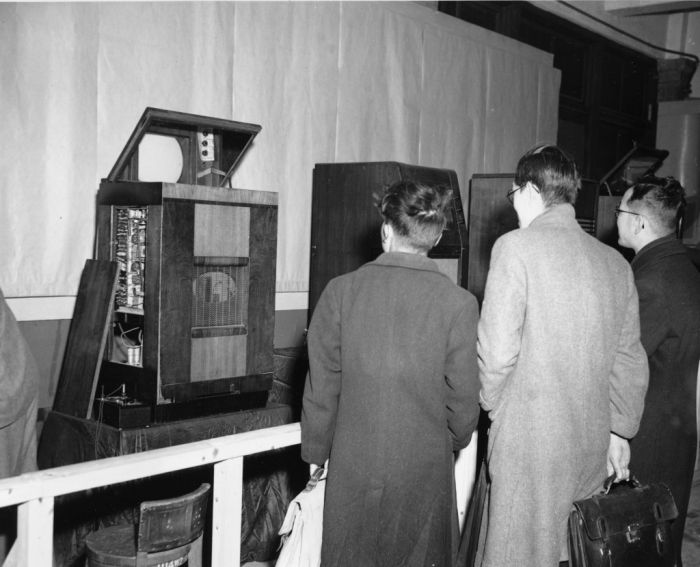
Visitors to the television demonstration at the studios of the Japanese Broadcasting Company wait for the show to appear on the screen of one on the receivers, in Tokyo, March 27, 1949. These receiving sets, which will have screens measuring eight by ten inches, are not ready for the market yet. (AP Photo/Charles P. Gorry)

It’slunchtime for ladies attending the Communist-sponsored International WomenÂs Day rally in Tokyo on March 16, 1949. (AP Photo)

Kyuichi Tokuda, Secretary General of the Communist Party in Tokyo, gestures as he thanks the huge crowd which gathered outside the Asahi newspaper office in Tokyo on Jan. 24, 1949 to hear the election returns. The communists gained 31 new seats in the Japanese Diet, boosting their total to 35. Premier Shigeru YoshidaÂs ultra-conservative party, however, won 263 seats, a gain of 100. (AP Photo/Charles P. Gorry)
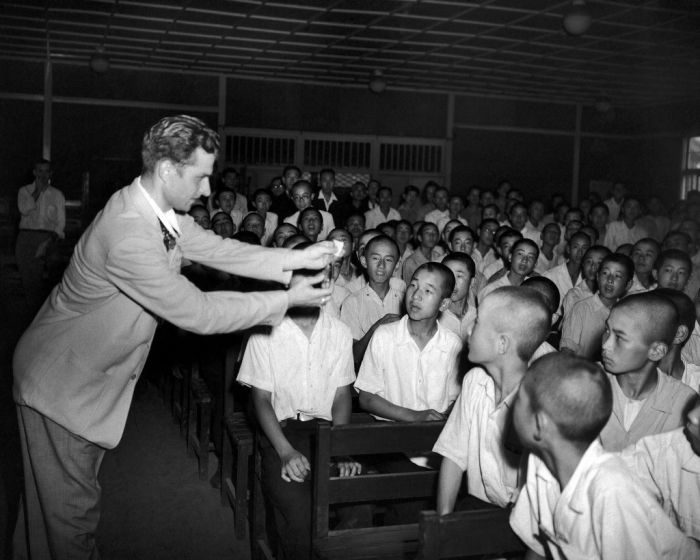
Students at the Peers School in Tokyo are mystified as Jacob Tropp of Brooklyn, N.Y., amateur magician, makes a 50 cent piece, wrapped in tissue paper, disappear in a burst of flame, July 25, 1948. Crown Prince Akihito (in third row, next to boy whose face is hidden by TroppÂs hands) watches in amazement; he had felt the coin in the paper. Tropp, a SCAP employee, was one of five magicians who did tricks for the boys. (AP Photo)
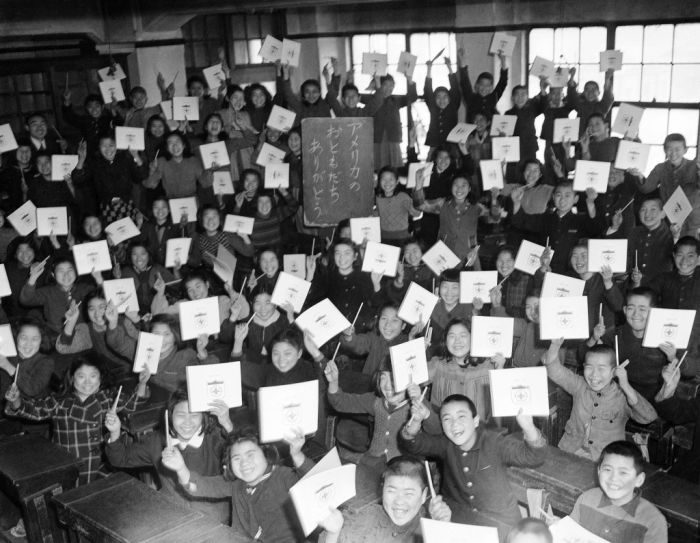
The Potato Race is underway as the contestants, employees of the Imperial household, race toward the finish line in Tokyo, Japan on April 20, 1947. Besides wearing bags to slow them, they are required to run backwards. This is an event of an annual field day on the palace grounds. (AP Photo)
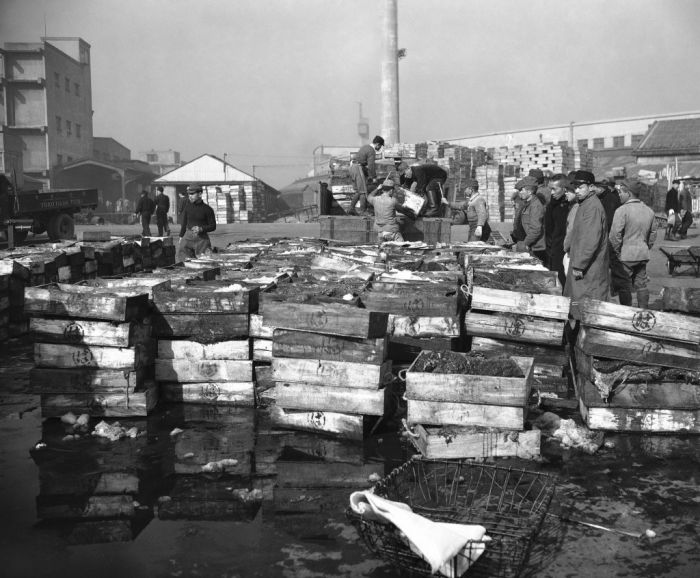
Whale meat is piled on the wharves as the Banshu-Maru is unloaded after its return from the Antarctic in Tokyo, Jan. 27, 1948 . (AP Photo)
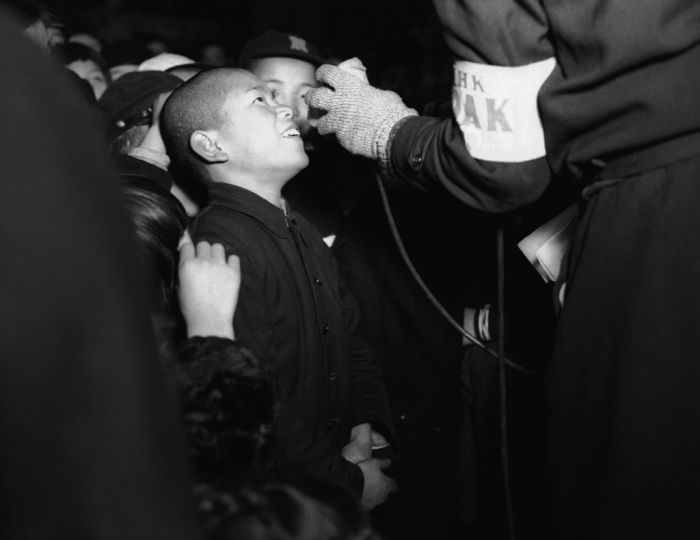
Adding a new twist to the “man on the street broadcast,” a regular feature of JOAK, announcers went out and cornered the youth of Tokyo to get their views and what they expect of Japan in the future, Jan. 10, 1948. All seemed to agree that a western-style house with central heating is their main ambition to have when they grow-up. The allied occupation personnel in Japan would like the same thing now. (AP Photo)
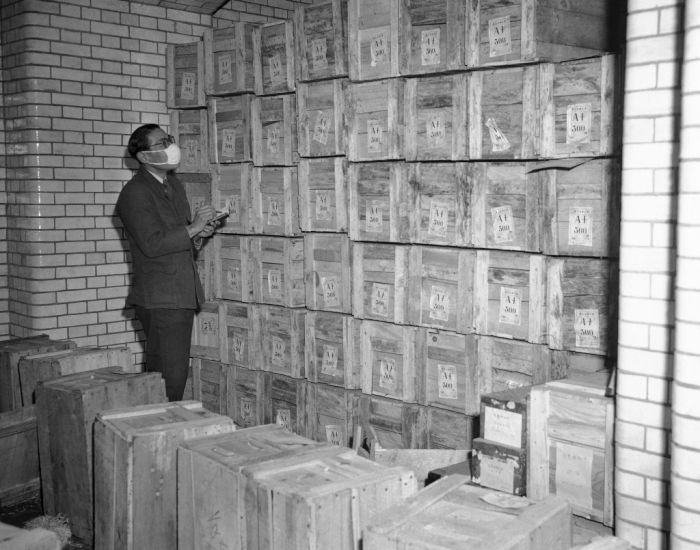
View inside the vaults in the Bank of Japan in Tokyo on Dec. 18, 1947, as new yen is stored in boxes until called into circulation by the government. With the increased circulation and the inflation of the yen, space for storing the money is at a premium. (AP Photo/Charles Gorry)
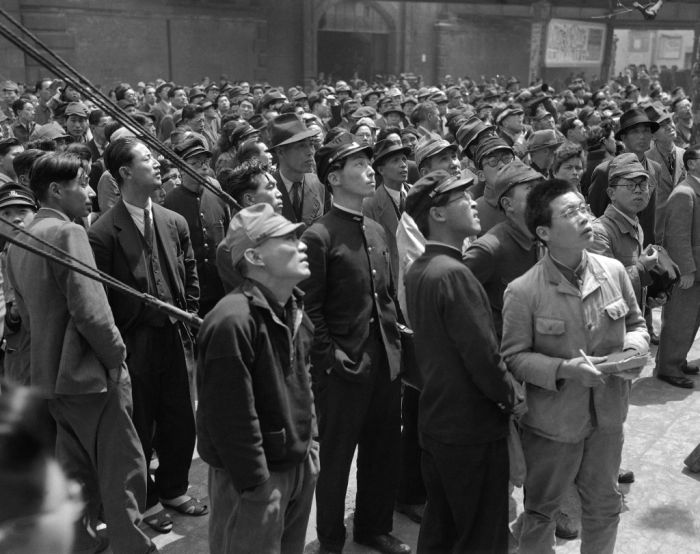
Tokyo citizens turn out to watch the bulletin boards announcing the election results for the candidates for the diet in front of the Asahi Newspaper office in Tokyo on May 7, 1947 which put up the results hourly until the final tabulation. (AP Photo)
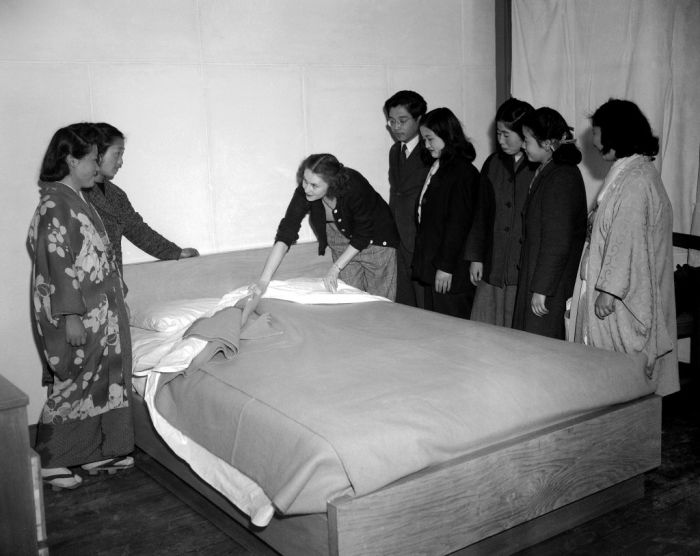
Although given preliminary instructions the girls are a bit vague about the proper making of a bed. Mrs. Anderson, with the help of an interpreter attached to the liaison section for the housing development, demonstrates the American way of bed making in Tokyo, Japan on April, 14, 1947. (AP Photo)

On orders of General MacArthur, Japanese police closed Communist Party daily paper in Tokyo on June 26, 1950, for 30 days because, MacArthur said, of its perversion of the truth in discussing the Korean situation.(AP Photo)
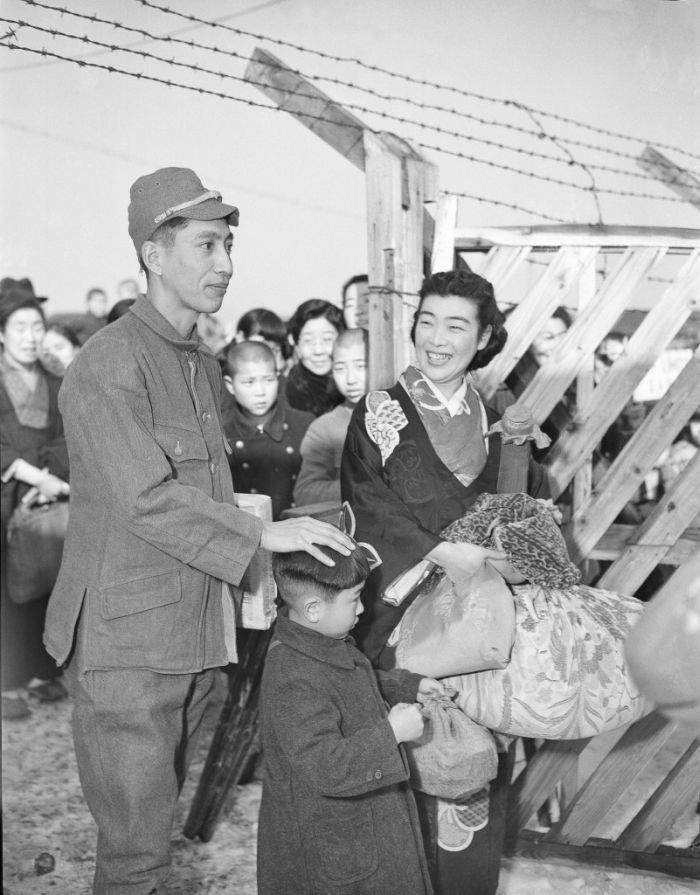
This is one of the 46 men who were released by the army in Tokyo, as part of SCAPs plan to free men who have served over 3 years and have good behavior records, this former Japanese POW guard as he walked out of the gates of Sugamo prison with his wife and young son in Tokyo, Dec. 30, 1949. (AP Photo)
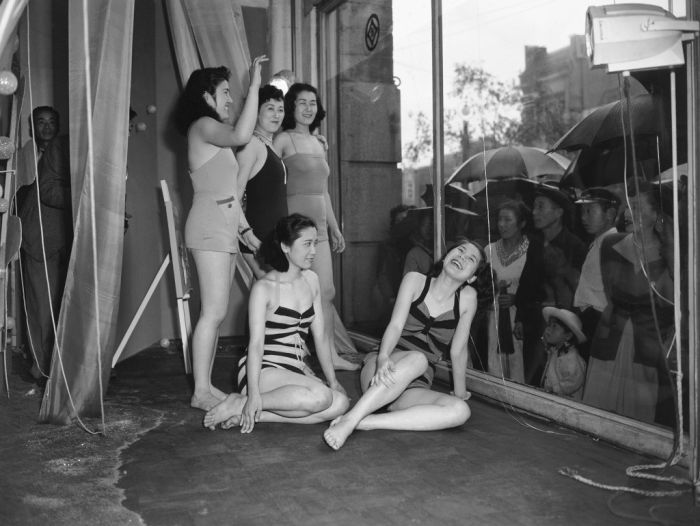
To draw the public’s attention to a new line of bathing suits, a Tokyo department store uses live models to show off the suits, June 5, 1950. The rain didn’t bother the curious and both the girls and the crowd seemed to like the idea of staring at each other through the glass. (AP Photo)
via Flashbak

